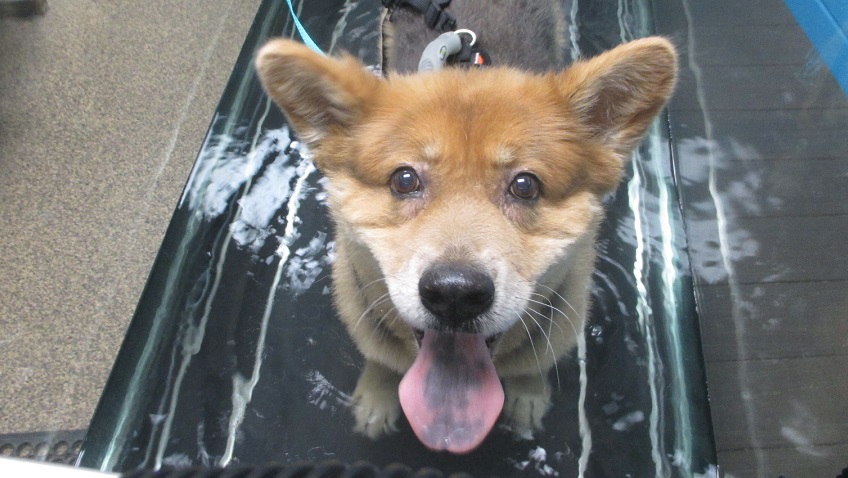
Pets Can See Big Gains from Physical Rehabilitation
Like their owners, dogs and cats start to feel more aches and pains in their joints as they age, so they may shy away from physical activity that aggravates their conditions. And just like their owners, older pets lose flexibility and put on excess weight as they avoid exercise -- causing the whole cycle to accelerate.
The situation is largely the same when a dog or cat undergoes surgery on their hips, elbows, knees and ankles. When it hurts to move their joints, they avoid activity -- which only causes them to lose even more range of motion.
To combat the loss of mobility, Cascade Hospital has developed an array of effective physical rehabilitation treatments that center on warmth and exercise to regain range of motion without the need for medications.
Every week up to 50 pets undergo treatments with specialized equipment at the hospital under the supervised care of Rehabilitation Director Dr. Gregory Paplawsky and LVTs and Certified Canine Rehabilitation Assistants Emily Harkness and Stacey VandenBerg. The team may prescribe and administer treatments that range from exercises to make muscle groups more limber to workouts in an underwater treadmill surrounded by warm water bath.
The hospital also has purchased a second therapy laser as a way to accelerate tissue repair, alleviate pain, and reduce swelling and inflammation from arthritis, tendonitis, and sprains. Therapy laser, also known as low-level laser therapy, uses light in the infrared spectrum to send soothing warmth deep into tissues without creating the sensation of heat on the skin like other techniques like heat lamps or heating pads.
“We’ve invested in a second device after we saw the benefits of the treatment,” Greg says. “It’s such a gentle treatment, especially for some of our older patients that can use some pain relief or aren’t healing as fast as they did when they were pups or kittens.”
Greg says that a well designed regime of rehabilitation treatments may also allow owners to reduce or eliminate the medications they give their pets to treat arthritis. “Our underwater treadmill takes the pressure off the pet’s joints as they work out, and the circulating warm water loosens their muscles,” he says. “On the exercise side, our technicians have extensive training in how to take pets through workouts to gently extend range of motion.”
The hospital has even had success with treating dogs suffering from herniated or bulging discs in their backs through rehabilitation techniques, rather than expensive and involved back surgery. “That kind of rehabilitation treatment takes months, but it can be an effective and affordable alternative to surgery in some cases,” Greg says.



